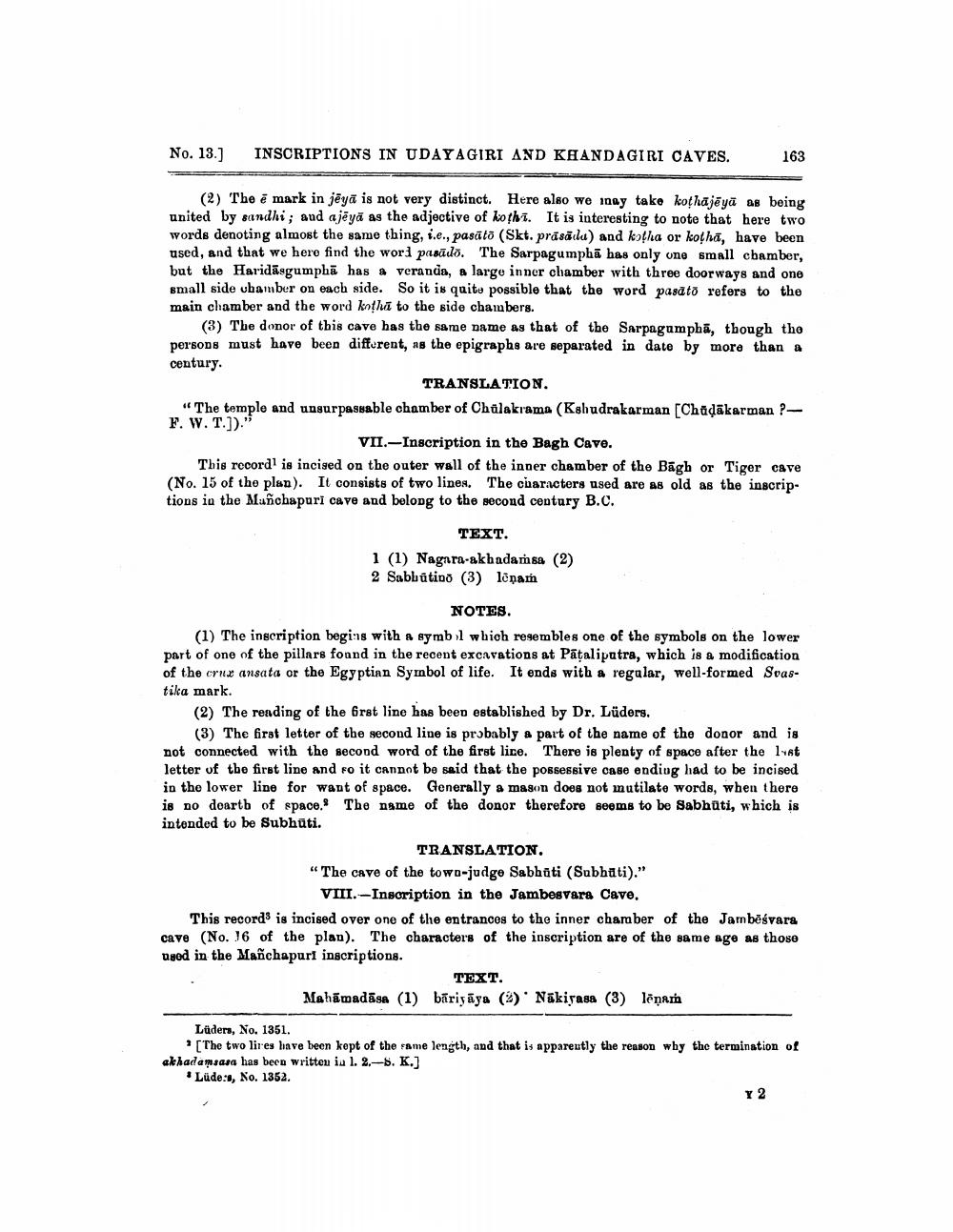________________
No. 13.)
INSCRIPTIONS IN UDAYAGIRI AND KHANDAGIRI CAVES.
163
(2) The é mark in jēyā is not very distinct. Here also we inay take kothājēyā as being united by sandhi; and ajėyā as the adjective of hothi. It is interesting to note that here two words denoting almost the same thing, i.e., pasāto (Skt. prāsāıla) and kotha or kotha, have been used, and that we here find the wori pabūdo. The Sarpagumphā has only one small chamber, but the Haridāsgumphā has a veranda, a large inner chamber with three doorways and one small side chamber on each side. So it is quite possible that the word pasato refers to the main chamber and the word kotha to the side chambers.
(3) The donor of this cave has the same name as that of the Sarpagumphā, though the persons must have been different, as the epigraphs are separated in date by more than a century.
TRANSLATION. "The temple and unsurpassable chamber of Chalakrama (Kshudrakarman [Chadākarman ?F. W. T.])."
VII.-Inscription in the Bagh Cave. This record is incised on the outer wall of the inner chamber of the Bāgh or Tiger cave (No. 15 of the plan). It consists of two lines. The characters used are as old as the inscriptions in the Munchapuri cave and belong to the second century B.C.
TEXT. 1 (1) Nagara-akhadaṁsa (2) 2 Sabbūtino (3) lēnam
NOTES. (1) The inscription begins with a symbol which regembles one of the symbols on the lower part of one of the pillars found in the recent excavations at Patalipatra, which is a modification of the crux ansata or the Egyptian Symbol of life. It ends with a regalar, well-formed Svastika mark
(2) The rending of the 6rst line has been established by Dr. Lüders.
(3) The first letter of the second line is probably a part of the name of the donor and is not connected with the second word of the first lice. There is plenty of space after the last letter of the first line and fo it cannot be said that the possessive case ending had to be incised in the lower line for want of space. Generally a mason does not mutilate words, when there is no doartb of space. The name of the donor therefore seems to be Sabhuti, which is intended to be Subhūti.
TRANSLATION, “The cave of the towo-judge Sabhūti (Subhati)."
VIII.-Inscription in the Jambesvara Cave. This records is incised over one of the entrances to the inner chamber of the Jambēśvara cave (No. 16 of the plan). The characters of the inscription are of the same age as those ugod in the Mañchapuri inscriptions.
TEXT. Mahāmadāsa (1) bāriyāya (2) Näkisasa (3) lēņam
Lüders, No. 1351.
[The two lires have been kept of the same length, and that is appareutly the reason why the termination of akhadamsasa has been written in l. 2.-S. K.) * Lüde:s, No. 1352.
Y 2




